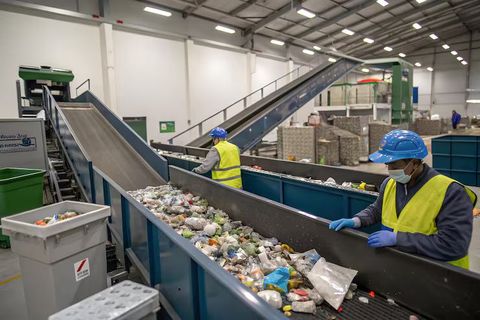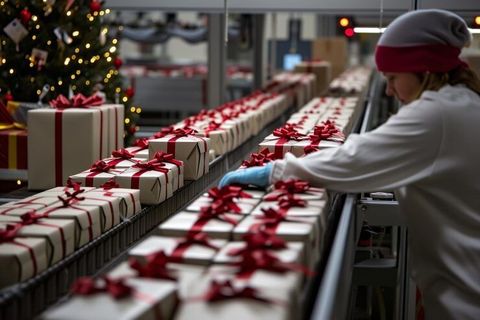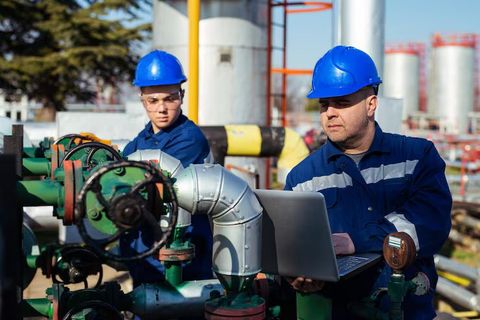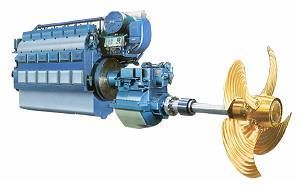Chemical Factory Environment Guide: Insights, Basics, and Key Details to Learn and Understand
A chemical factory environment refers to the physical and operational setting where chemical substances are produced, processed, and managed. These environments play a vital role in manufacturing a wide range of products — from pharmaceuticals and fertilizers to plastics, cleaning agents, and industrial materials.
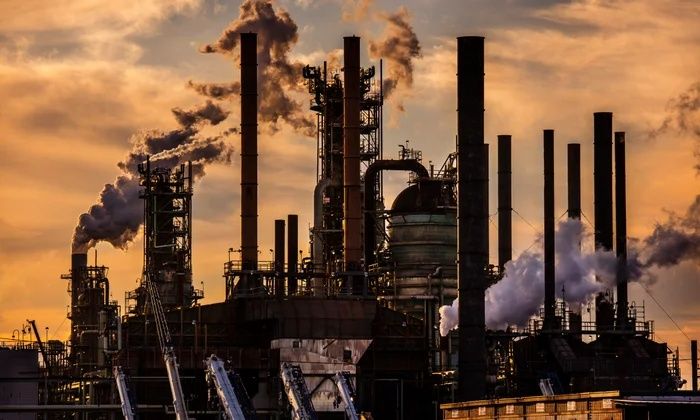
Chemical factories exist to meet global demand for essential materials that support modern life. Their operations involve chemical reactions, temperature control, and the use of specialized equipment to transform raw substances into valuable products.
Due to the complex and potentially hazardous nature of chemical processes, the factory environment must be carefully designed to ensure worker safety, environmental protection, and product quality.
Importance
Understanding chemical factory environments is important because they influence safety, sustainability, and industrial efficiency. Some key reasons include:
-
Worker Health and Safety: Proper management prevents exposure to harmful substances and reduces the risk of accidents.
-
Environmental Protection: Factories must control emissions, manage waste, and prevent contamination of air, water, and soil.
-
Product Quality: Controlled environments ensure consistent chemical reactions, leading to reliable and high-quality outputs.
-
Energy Efficiency: Optimized systems reduce resource consumption, aligning with modern sustainability goals.
-
Community Safety: Proper risk management minimizes the chances of incidents that could affect nearby populations.
The chemical industry affects millions of people, from factory workers to consumers and communities near industrial zones. Effective environmental management solves problems related to pollution, safety, and compliance with global sustainability standards.
Recent Updates
Over the past few years, significant changes have shaped how chemical factories operate and manage their environments. From 2024 to 2025, several new developments have emerged:
-
Adoption of AI and Automation (2024): Artificial intelligence is now used for monitoring equipment conditions, predicting failures, and optimizing energy use.
-
Sustainable Chemical Production (2025): Factories are transitioning to green chemistry practices, using renewable raw materials and minimizing hazardous byproducts.
-
Emission Monitoring Technologies (2024): Advanced sensors and data analytics are helping companies track and reduce greenhouse gas emissions.
-
Circular Economy Integration (2025): Chemical plants are reusing waste materials and promoting closed-loop production cycles to minimize environmental impact.
-
Digital Twin Applications (2025): Virtual replicas of factory systems allow engineers to simulate and improve chemical processes safely.
According to industry research, global chemical manufacturers are increasingly investing in digital and sustainable solutions to comply with stricter environmental policies and meet carbon-neutral goals by 2030.
Laws or Policies
Chemical factory environments are heavily regulated to ensure safety, health, and environmental compliance. Key international and regional laws include:
-
OSHA Standards (United States): The Occupational Safety and Health Administration enforces workplace safety regulations, including chemical handling and hazard communication.
-
EU REACH Regulation: The European Union’s REACH (Registration, Evaluation, Authorisation, and Restriction of Chemicals) law governs how chemicals are produced and marketed.
-
Environmental Protection Laws: Many countries require chemical factories to manage emissions, waste disposal, and water treatment under strict environmental protection acts.
-
Hazardous Waste Management Rules: Regulations in Asia, the EU, and North America outline how toxic waste must be stored, treated, and transported safely.
-
ISO 14001 Certification: This international standard helps organizations establish and maintain effective environmental management systems.
Governments worldwide have also introduced stricter monitoring of greenhouse gas emissions, with new compliance targets launched in 2025 to align with the Paris Agreement and global sustainability initiatives.
Tools and Resources
Several modern tools and resources help manage, monitor, and study chemical factory environments effectively:
-
Environmental Monitoring Systems: Automated sensors measure air and water quality, temperature, and humidity in real-time.
-
Process Simulation Software: Programs like Aspen Plus and ChemCAD are used to model and optimize chemical reactions safely.
-
Safety Data Sheet (SDS) Libraries: Online databases provide detailed chemical handling and hazard information.
-
Green Chemistry Toolkits: Resources developed by environmental agencies guide factories toward safer and more sustainable production methods.
-
Regulatory Portals: Websites from organizations like the EPA (U.S.) and ECHA (EU) offer updated environmental compliance requirements.
-
Training Platforms: Online courses and virtual reality simulations enhance worker awareness of safety and emergency response.
Example Table: Key Environmental Parameters in Chemical Factories
| Parameter | Description | Purpose |
|---|---|---|
| Air Quality | Measures levels of gases and particulates | Ensures worker and community health |
| Water Quality | Monitors chemical effluents and pH levels | Prevents water pollution |
| Temperature Control | Regulates heat in chemical reactions | Maintains process stability |
| Waste Management | Handles solid and liquid waste | Reduces contamination and hazards |
| Energy Usage | Tracks electricity and fuel consumption | Improves efficiency and sustainability |
FAQs
What is a chemical factory environment?
It refers to the physical and operational conditions within a facility where chemical products are manufactured, including equipment layout, air quality, temperature, and safety systems.
Why is environmental control important in chemical factories?
Controlled environments help prevent accidents, protect workers, maintain product quality, and minimize environmental pollution.
How are emissions managed in chemical production?
Factories use filtration systems, scrubbers, and continuous monitoring technologies to capture and reduce harmful emissions before they reach the atmosphere.
What safety systems are used in chemical factories?
Common systems include automatic fire suppression, gas leak detection, emergency ventilation, and real-time monitoring sensors.
How are modern technologies improving chemical factory environments?
Digital tools like IoT sensors, artificial intelligence, and predictive analytics enhance efficiency, safety, and environmental performance.
Conclusion
The chemical factory environment is a crucial part of the global industrial system, influencing safety, environmental health, and economic growth. As industries modernize, maintaining sustainable and secure operations has become more essential than ever.
Innovations such as automation, digital monitoring, and sustainable chemistry are reshaping how factories function. Regulatory frameworks ensure accountability, while technological tools promote transparency and environmental responsibility.

